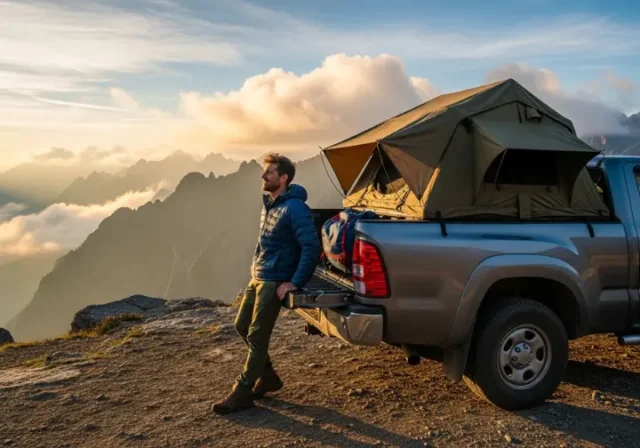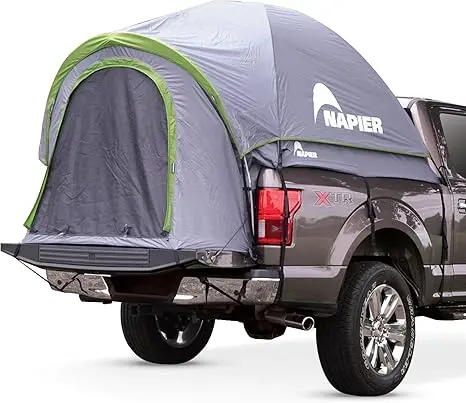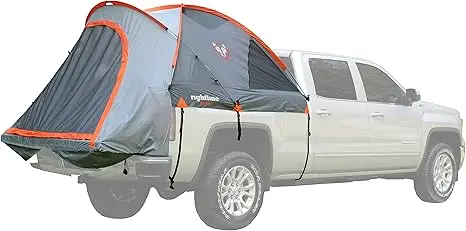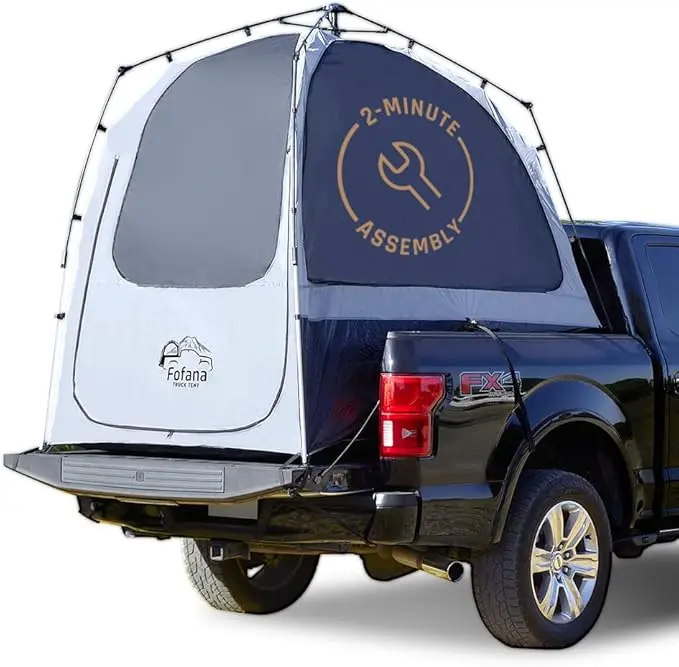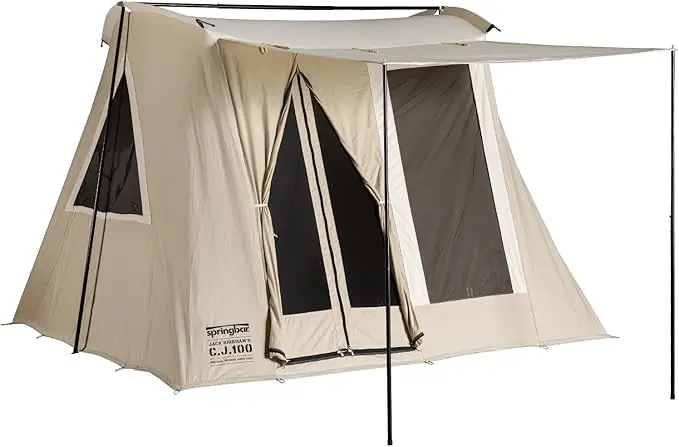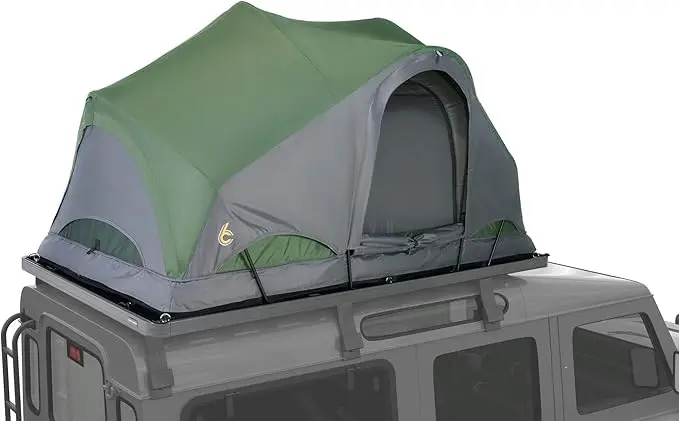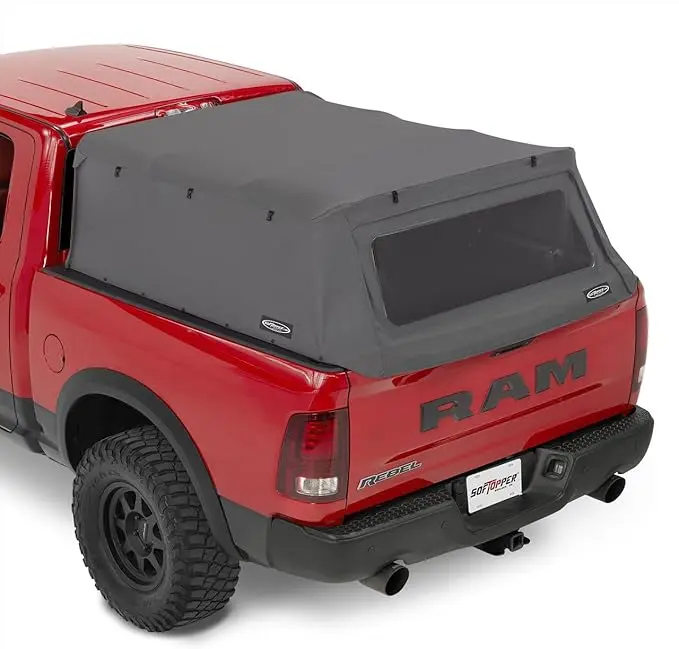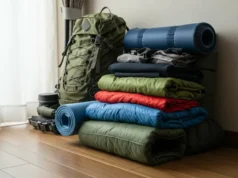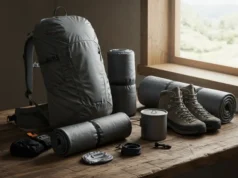In this article
It’s 10 PM. You’ve just pulled your F150 into a dark, deserted trailhead—perhaps a dispersed camping spot outside Moab, UT—after a four-hour drive, and the thought of fumbling with ground tarps and tent poles on rocky, uneven dirt is the last thing you want. This is the moment a truck tent transforms from a neat accessory into a game-changing piece of gear. But with so many options—from breezy pop-ups to bomb-proof canvas truck tents—how do you choose the right one? The secret isn’t just finding a tent that fits your truck; it’s finding one that fits your hike. This guide provides a data-backed framework to help you select a truck box tent that serves as a reliable, comfortable, and strategic campsite for any trail you plan to conquer.
- Identify Your Hiker Type: We break down the three core types of trailhead camping enthusiasts—The Weekend Warrior, The Expedition Outfitter, and The Modern Overlander—to help you pinpoint your exact needs.
- Master the Mobility Problem: Learn why “Trailhead Mobility”—the ability to use your truck after setting up camp—is the single most important, and often overlooked, feature.
- Canvas vs. Polyester: Understand the critical trade-offs between the long-term durability and all-weather comfort of canvas versus the lightweight convenience and affordability of polyester.
- Data-Backed Recommendations: Skip the marketing hype. We provide quantitative scores and field-tested analysis for the top tents of 2024, matched to your specific hiking persona.
How to Choose the Right truck box tent: An Expert’s Framework
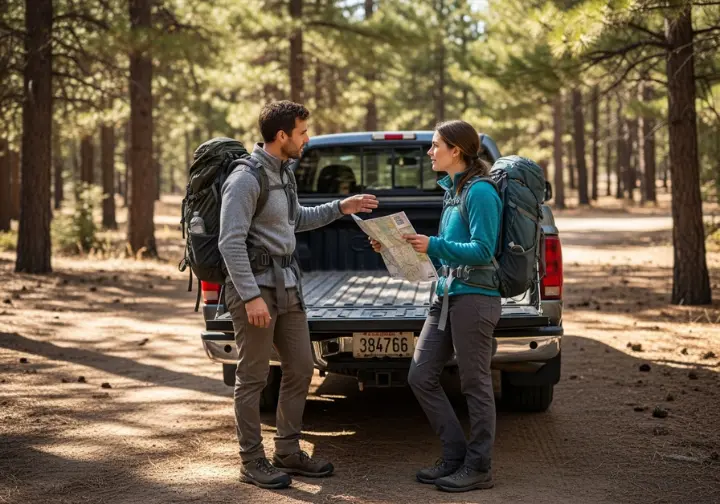
To arm the reader with the objective knowledge needed to make a smart, confident choice. This isn’t about brand names; it’s about understanding the core principles of what makes a great truck tent for a dedicated hiker.
How Much Weather Resistance Do You Really Need?
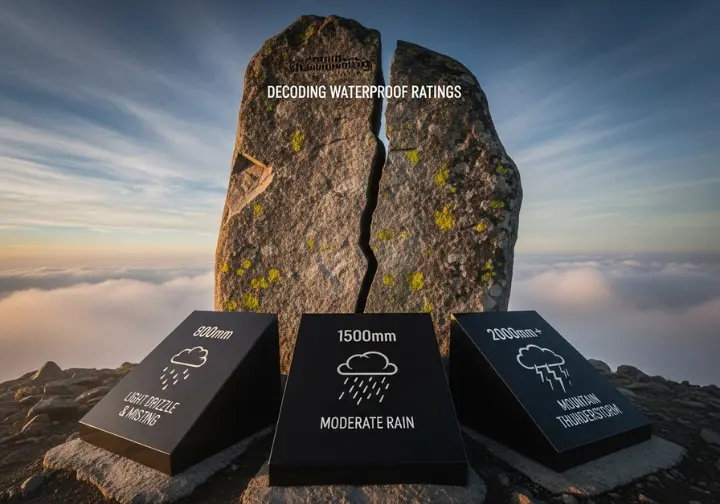
True weather resistance isn’t just about keeping the rain out; it’s a comprehensive system that combines waterproof fabric with structural wind stability. The fabric’s performance is often measured by its Hydrostatic Head (HH) rating, a key attribute in any waterproof rating (mm). In practical terms, an 800mm PU coating will handle light desert showers just fine, but if you’re staging for a climb in the Rockies or planning a trip along the Blue Ridge Parkway, a 1500mm-2000mm+ rating is necessary to withstand afternoon mountain thunderstorms. However, a waterproof fabric is useless if the tent collapses in the wind. That’s where pole material and a robust anchor system become critical for handling the high winds common at exposed trailheads. Steel tube frame poles offer superior strength over fiberglass poles, and a well-designed system of straps and buckles will keep the tent securely fastened to your truck. For the ultimate in all-weather performance, heavy canvas tents are in a league of their own, shedding rain and shrugging off wind, but this performance comes at a significant weight penalty, much like when choosing a traditional ground tent.
But a tent that can withstand a hurricane is useless if it falls apart after one season.
Is Heavy-Duty Durability Worth the Weight and Cost?
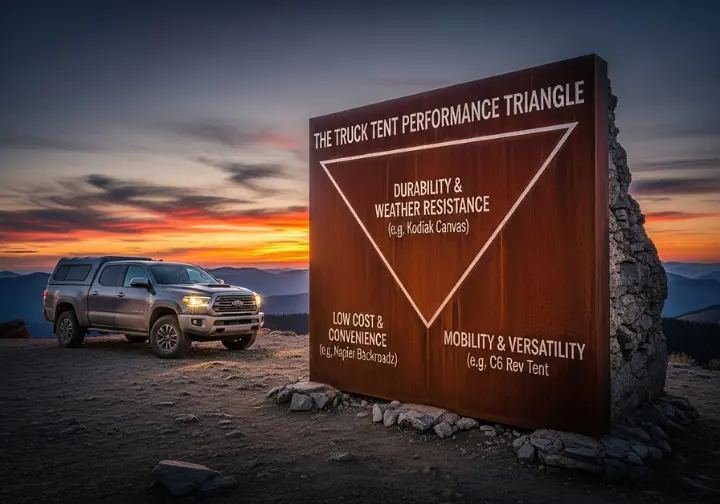
Framing durability is best done as a “return on investment” calculation. That cheap polyester tent might seem like a great deal, but it’s a poor value if it disintegrates after a single season of heavy use and exposure to high-altitude UV rays. The primary fabric materials present a clear trade-off: lightweight polyester taffeta or ripstop nylon is affordable and enhances pack-ability, but prone to UV degradation and tearing, while heavy-duty cotton duck Hydra-Shield canvas is highly durable, wonderfully breathable, but requires periodic maintenance and carries a hefty weight. The same trade-off exists in pole materials, where inexpensive fiberglass is light but can splinter under stress, while steel or aluminum offers superior strength and a much longer warranty length. Don’t overlook the small details that signal quality, like heavy-duty YKK zippers, reinforced stitching at stress points, and sturdy, non-brittle buckles that won’t cause vehicle damage. Investing in gear that lasts isn’t just a smart financial choice; it’s also a core part of Leave No Trace principles.
Pro-Tip: When inspecting a tent, pay close attention to the zippers. Look for the “YKK” stamp. This is a quick and reliable indicator that the manufacturer didn’t cut corners on one of the most frequently used and critical components of any tent.
While a bomb-proof tent is great, its value plummets if it’s so difficult to set up that you avoid using it.
Will a Sewn-In Floor Help or Hinder Your Trip?
This is one of the most fundamental design choices in the truck tent world, and your preference will drastically shape your camping trip. The decision boils down to a sewn-in floor versus a floorless design. A truck tent with a sewn-in floor, like the popular Napier Backroadz Truck Tent, offers the undeniable pro of a clean, sealed, and bug-free environment, effectively turning your truck bed into a self-contained room. The con, however, is a massive logistical hassle: you must completely unload your truck bed—every cooler, gear bin, and duffel bag—before every single setup. In contrast, a floorless design, like those from Rightline Gear, offers the incredible convenience of a 5-minute setup, as you can pitch the tent with all your gear still in the truck bed, drastically cutting down set-up time. The trade-off is direct exposure to a potentially dirty truck bed and the possibility of small gaps where bugs or wind-driven rain could find a way in. This single feature often dictates the “Ease of Setup” more than any other factor.
Once the tent is up, your focus shifts to how comfortable it is as a home base.
What’s the Difference Between Space and True Livability?
Livability is the qualitative experience of being inside the tent. Raw square footage is misleading; it’s the quality of the space that matters. The single most important metric for livability is peak height / interior headroom. A tent with over five feet of headroom allows you to sit up comfortably, change clothes without contorting yourself, and generally avoid feeling claustrophobic. Just as critical is ventilation. A good window/door count does more than provide comfort on warm nights; it is essential for condensation management on cold nights, preventing you from waking up to a damp, dripping interior and soggy sleeping bags. Finally, don’t dismiss features like gear lofts, interior gear pockets, and a lantern hook as mere luxuries. In the confined space of a truck bed, they are essential organizational tools that keep the floor clear and the space functional.
For those planning for winter hiking or a cold weather test, livability also means warmth. Your tent’s cold weather performance is part of a larger vehicle system. While most truck tents don’t have an official snow-load rating or R-value, you can significantly boost warmth by insulating the truck bed underneath your sleeping pad. This increases the total R-value of your sleep system, which is crucial for comfort and safety in sub-freezing temperatures. Excellent condensation management becomes paramount here, as a breathable canvas tent will outperform a polyester one in preventing interior frost buildup.
Pro-Tip: If you’re considering a mobile tent system like the C6 Rev Tent that can be left on the ground, always check local land manager regulations (e.g., USFS, BLM). Some areas have rules against leaving “unattended property” at trailheads or dispersed sites, even for a few hours.
Does Your Tent Trap Your Truck at Camp?
We’ve arrived at “Trailhead Mobility,” the ultimate test of a truck tent’s real-world versatility and the factor most often overlooked by first-time buyers. Here’s the core problem: most truck tents, once set up, effectively immobilize your vehicle. This might be fine for a single overnight stop, but it becomes a huge issue if you plan to establish a multi-day hiking basecamp for multi-day hiking trips and then drive to different trailheads or into town for supplies each day. This is especially true for accessing trailheads with high trailhead proximity variance, like those for the Four Pass Loop or Chicago Basin, which may require navigating rough roads. Breaking down and re-pitching your entire camp daily is a massive time sink and a major source of frustration for experienced users. Recognizing this, some of the most innovative designs on the market are lightweight, ground-convertible systems specifically engineered to solve this problem. They allow you to set up your shelter, then easily remove it from the truck bed, freeing your vehicle for day use without sacrificing your established campsite.
Now that you’re armed with this expert framework, let’s look at how we applied it to find the best truck tents on the market.
Our Selection Process: How We Built This Guide
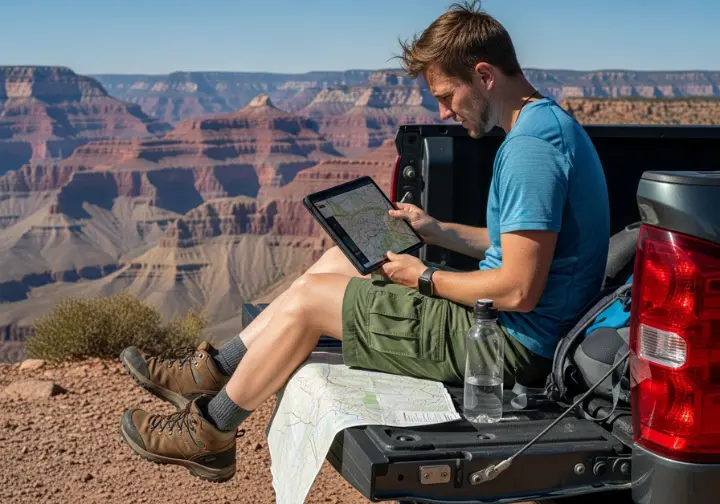
Our Commitment to Objectivity: We aren’t just listing popular products. This guide is the result of a comprehensive analysis of expert reviews, long-term user reports from forums and trail communities, and manufacturer data to identify what truly performs in the outdoors. We don’t just read the marketing copy; we dig into the materials science and user complaints to find the truth.
The Evaluation Framework: Every tent recommended in this guide was rigorously scored against the six critical criteria you just learned about: Weather Resistance, Durability, Ease of Setup, Livability, Trailhead Mobility, and Overall Value. This ensures our recommendations are based on a consistent and transparent methodology, not just personal preference.
How We Selected the Products: We started by identifying three distinct hiker personas based on real-world use cases: the time-crunched Weekend Warrior, the demanding Expedition Outfitter, and the versatile Modern Overlander. Then, we curated the top-performing products that directly meet the unique priorities of each persona, ensuring every recommendation is purposeful and solves a specific set of problems.
A Note on Affiliate Links: If you choose to buy through a link on this page, we may earn a small commission at no extra cost to you. This helps support our mission of providing in-depth, independent gear analysis that you can trust. We only recommend products we have thoroughly vetted and would confidently stand behind on our own adventures.
The Best Truck Tents of 2025: Our Top Recommendations for Every Need
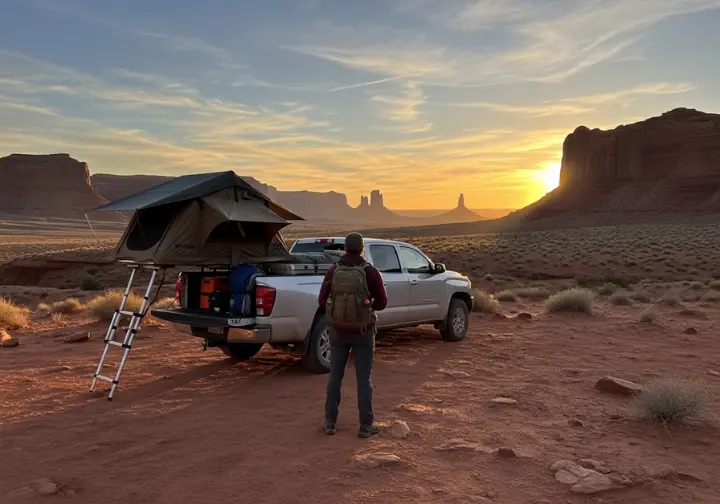
Our Top Picks for The Weekend Warrior
You’re an enthusiastic but time-crunched hiker who primarily camps in predictable 3-season weather. Your priorities are exceptional value, fast setup, and solid comfort for one or two nights out. You want a reliable, no-frills truck tent that gets the job done without over-complicating things, maximizing your time on the trail, whether you’re driving a RAM 1500 or a Toyota Tacoma.
Our Top Picks for The Expedition Outfitter
You are a serious, experienced outdoor enthusiast who undertakes longer trips in challenging, often unpredictable 4-season conditions. Your primary goal is absolute reliability and survivability. You prioritize bomb-proof materials and a high season rating above all else, and you are willing to accept higher costs and a more involved setup for uncompromising performance, even if it means a heavier packed size.
Our Top Picks for The Modern Overlander
You are a tech-savvy hiker who blends vehicle-based travel with trail time. Your goal is a seamless, versatile, and efficient system for overlanding. You are acutely aware of the “Trailhead Mobility” problem and actively seek innovative, lightweight, and multi-functional solutions to solve it, often pairing your tent with a rack like the Thule TracRac or considering optional annex or awning add-ons.
Conclusion
The journey to the perfect truck tent ends with a clear understanding of trade-offs. The most critical decision you’ll make is balancing your need for Trailhead Mobility against your need for Weather Resistance and Durability. No single tent wins at everything. Floorless designs offer unmatched setup speed, while sewn-in floors provide a cleaner, more sealed environment at the cost of major inconvenience. For serious, frequent use in harsh conditions, the long-term value and comfort of a heavy-duty canvas tent often outweighs its high initial cost and weight. Ultimately, the “best” truck tent is the one that removes the most friction from your specific hiking style, enabling you to spend more time on the trail and less time fussing with camp on your next camping trip.
Armed with this knowledge, identify your hiker persona, prioritize the features that matter most to you, and choose the tent that will serve as a reliable partner on your next great adventure.
Frequently Asked Questions about Truck Tents
Are truck tents waterproof?
Yes, most quality polyester truck tents are waterproof enough for typical 3-season rain. Look for a tent with a full rainfly and a hydrostatic head (HH) rating of at least 1200mm to 1500mm for reliable protection. However, in severe, sustained downpours or heavy, wet snow, premium canvas tents are generally superior due to the nature of the fabric. For maximum weather protection in the most challenging conditions, a canvas truck model like the Kodiak Canvas Truck Bed Tent is an excellent choice.
Can you drive with a truck tent set up?
No, you cannot drive with a truck tent installed. These shelters are not designed to withstand wind forces while the vehicle is in motion and must be completely taken down and stowed before driving. Doing so is extremely dangerous. If the ability to drive after setting up camp is your main priority, you need a tent specifically designed for high “Trailhead Mobility.” The best option for this is the C6 Outdoor Rev Tent, which can be easily lifted out of the bed.
What is better, a tent with a floor or without one?
Neither design is inherently better; they serve completely different priorities. A bed tent with a sewn-in floor offers a clean, fully sealed space, protecting you and your gear from a dirty truck bed and crawling insects. However, this comes at the cost of convenience, as you must completely empty your truck bed before every setup. A floorless tent offers the incredible advantage of a much faster setup, as it can be pitched with gear left in place. For a top-tier floored option, consider the Napier Backroadz Truck Tent; for the ultimate in floorless convenience, check out the Rightline Gear Truck Tent.
Are canvas truck tents worth the high cost?
For a frequent, all-weather hiker or someone who identifies as an “Expedition Outfitter,” a canvas tent is absolutely worth the investment. Its superior durability means it can last for decades, and its natural breathability significantly reduces interior condensation—a major issue in cold weather. It also offers far better stability in high winds. This combination makes it a better long-term value for serious users. For the more casual “Weekend Warrior” who camps a few times a year in fair weather, a more affordable and lightweight polyester tent is usually a more practical and valuable choice.
Risk Disclaimer: Hiking, trekking, backpacking, and all related outdoor activities involve inherent risks which may result in serious injury, illness, or death. The information provided on The Hiking Tribe is for educational and informational purposes only. While we strive for accuracy, information on trails, gear, techniques, and safety is not a substitute for your own best judgment and thorough preparation. Trail conditions, weather, and other environmental factors change rapidly and may differ from what is described on this site. Always check with official sources like park services for the most current alerts and conditions. Never undertake a hike beyond your abilities and always be prepared for the unexpected. By using this website, you agree that you are solely responsible for your own safety. Any reliance you place on our content is strictly at your own risk, and you assume all liability for your actions and decisions in the outdoors. The Hiking Tribe and its authors will not be held liable for any injury, damage, or loss sustained in connection with the use of the information herein.
Affiliate Disclosure: We are a participant in the Amazon Services LLC Associates Program, an affiliate advertising program designed to provide a means for us to earn advertising fees by advertising and linking to Amazon.com. As an Amazon Associate, we earn from qualifying purchases. We also participate in other affiliate programs and may receive a commission on products purchased through our links, at no extra cost to you. Additional terms are found in the terms of service.



